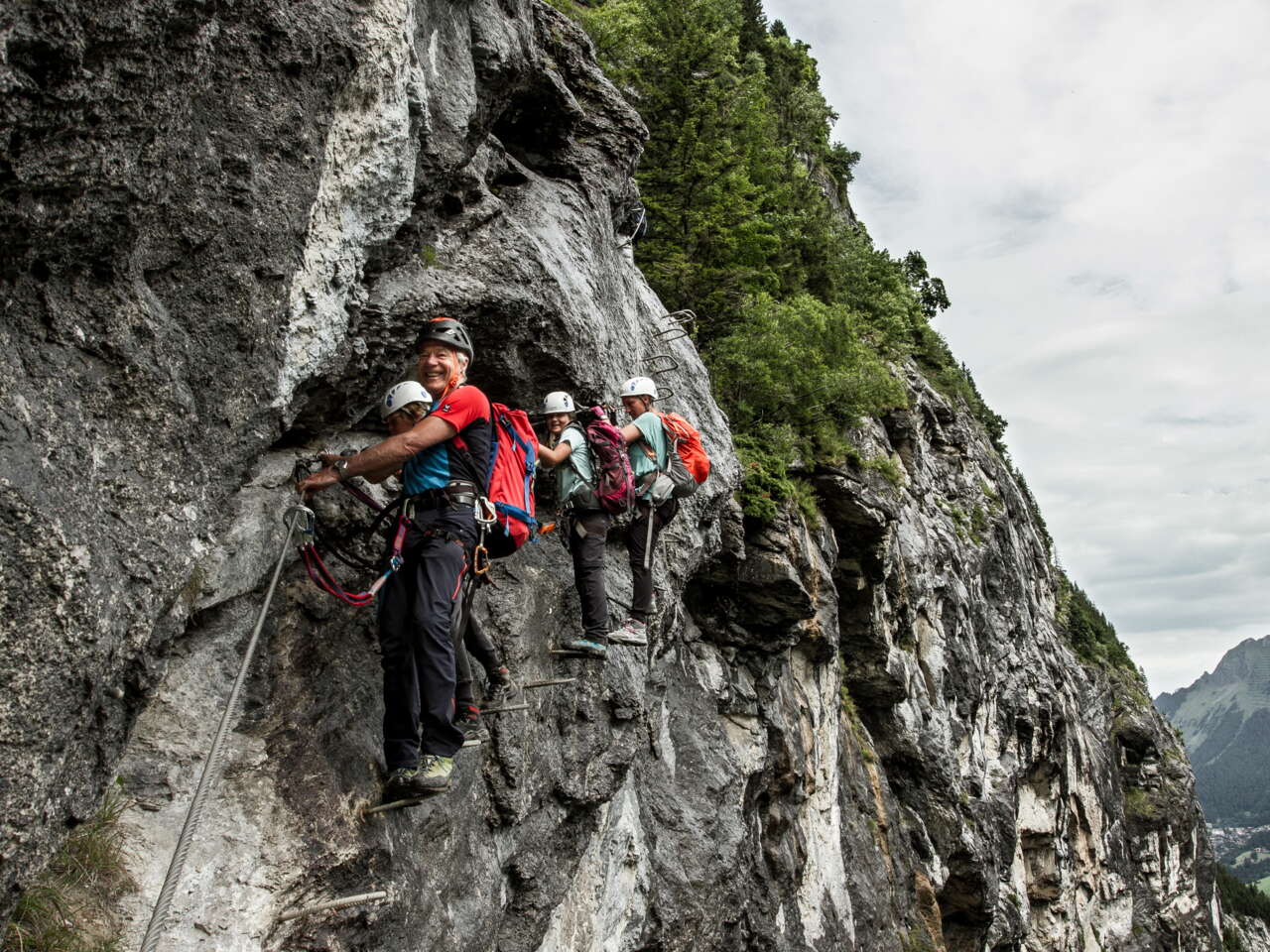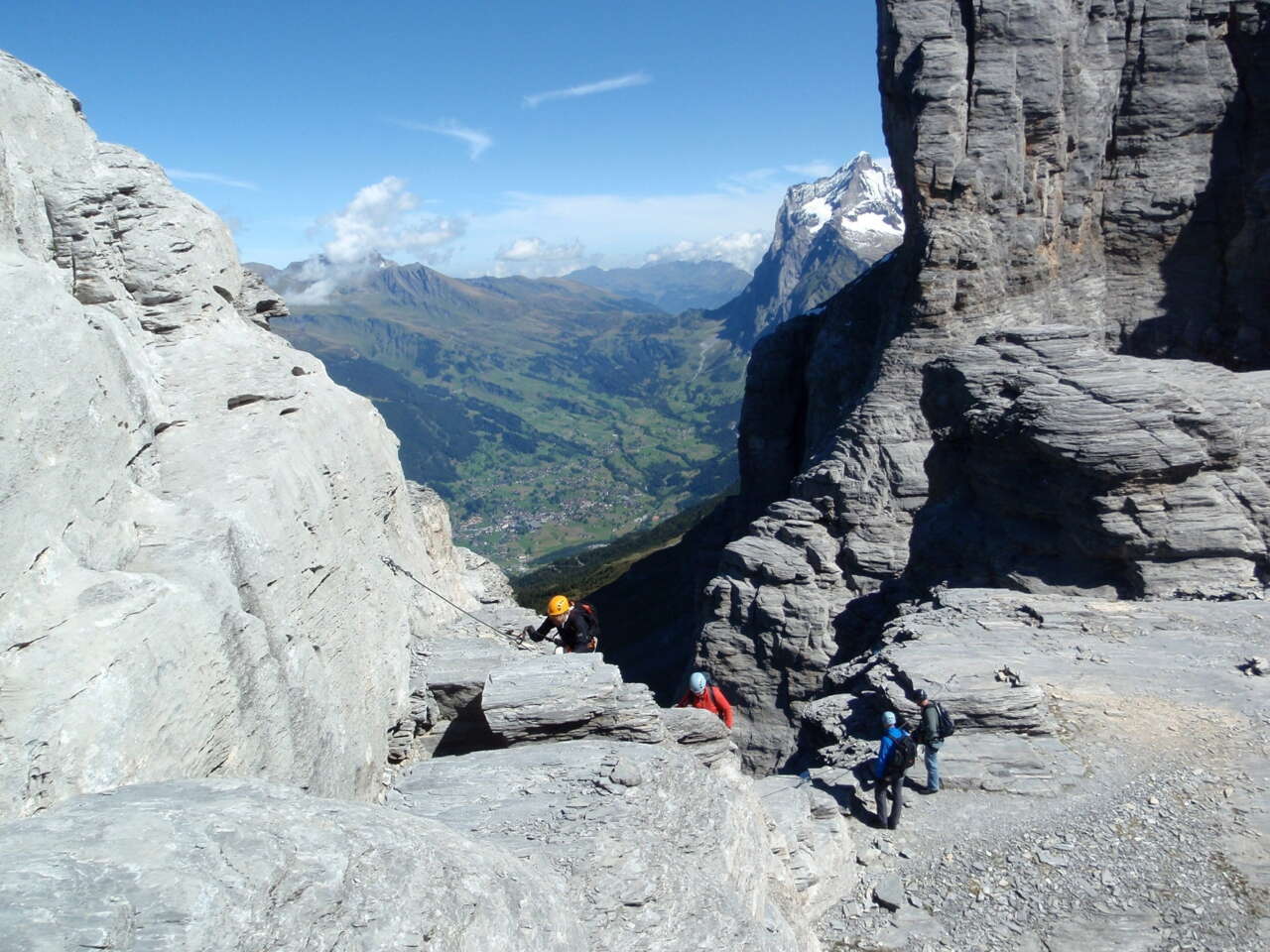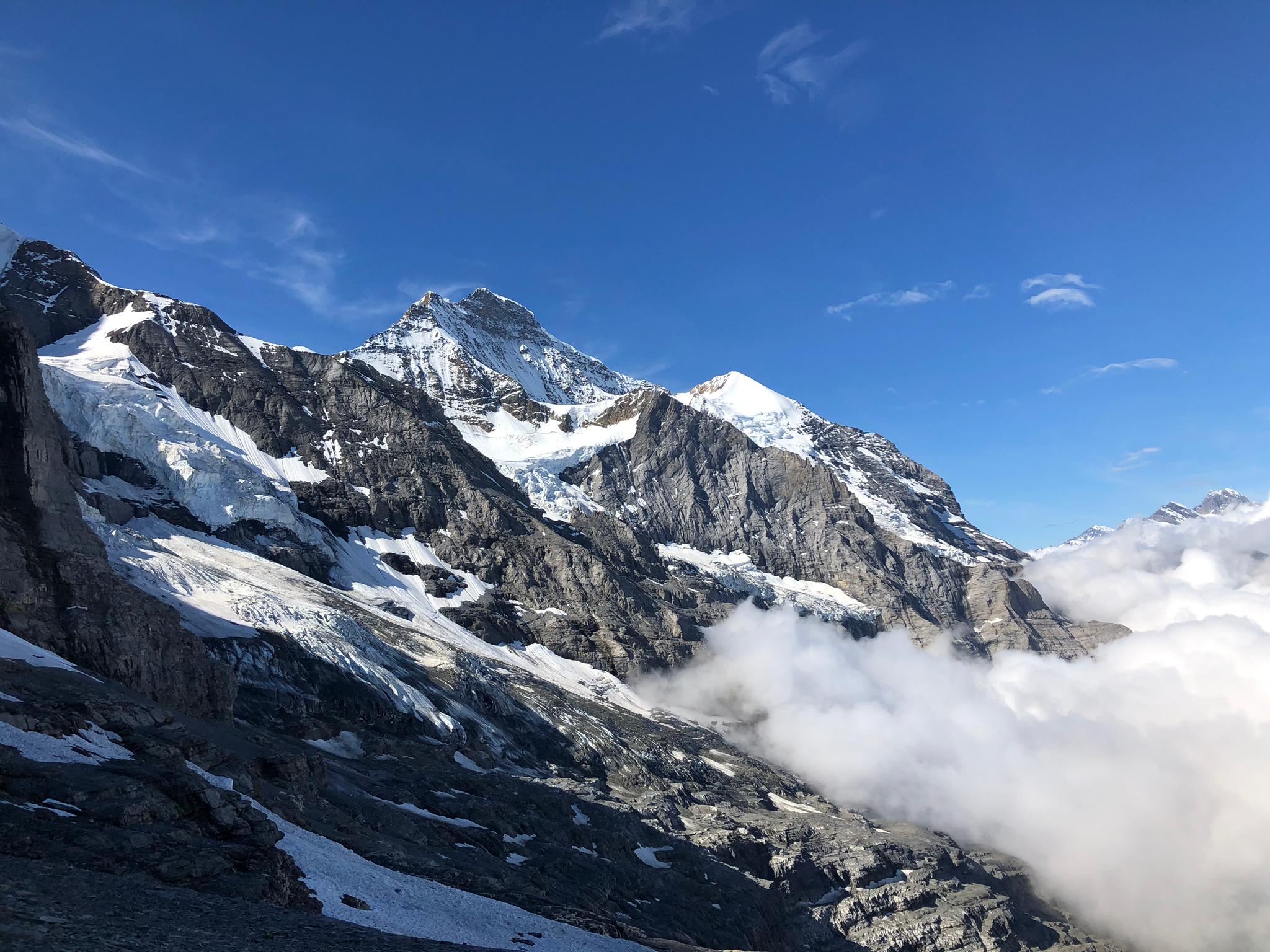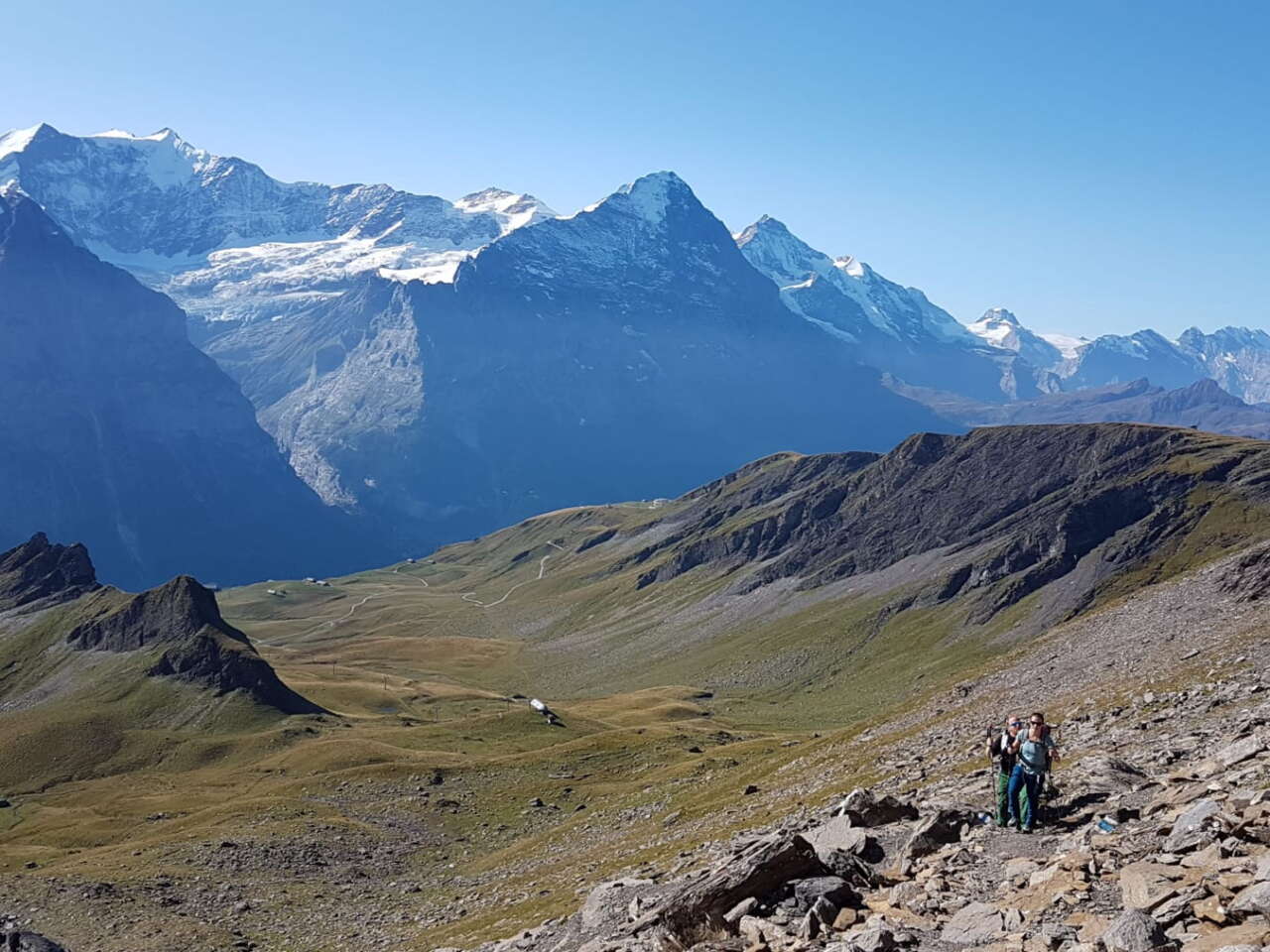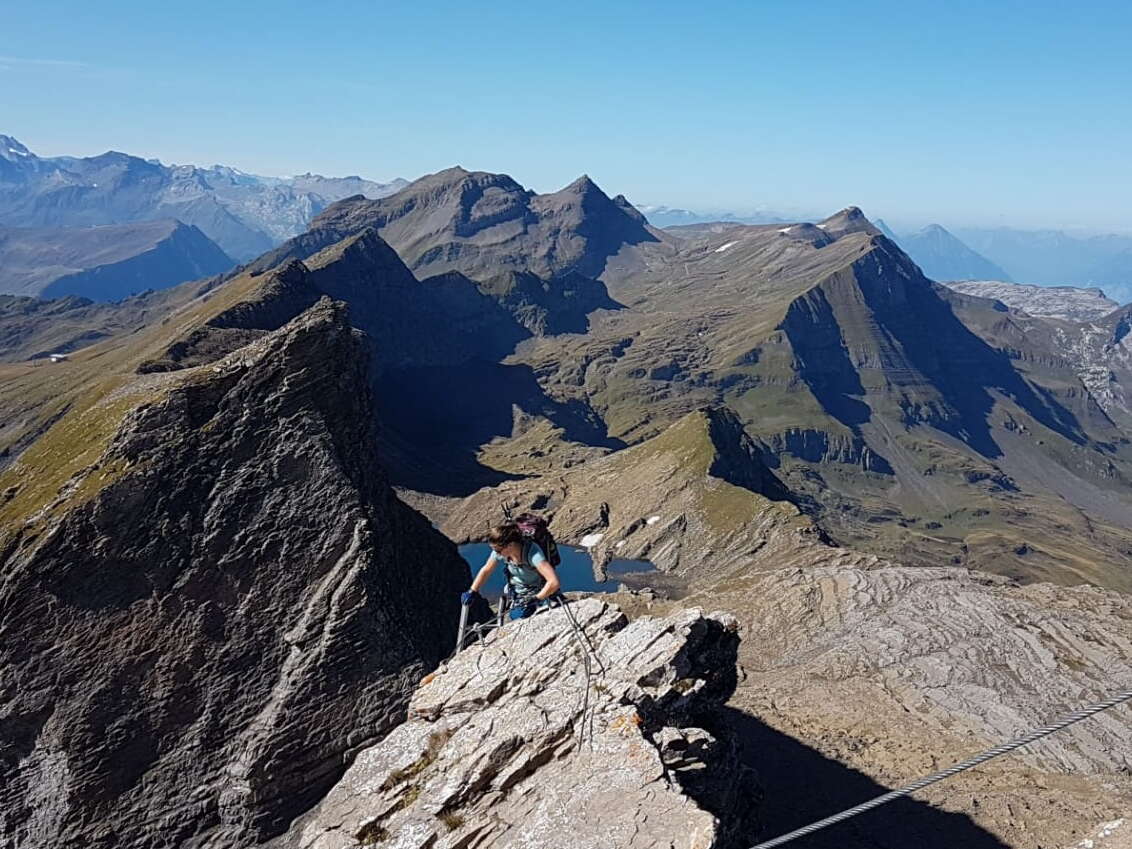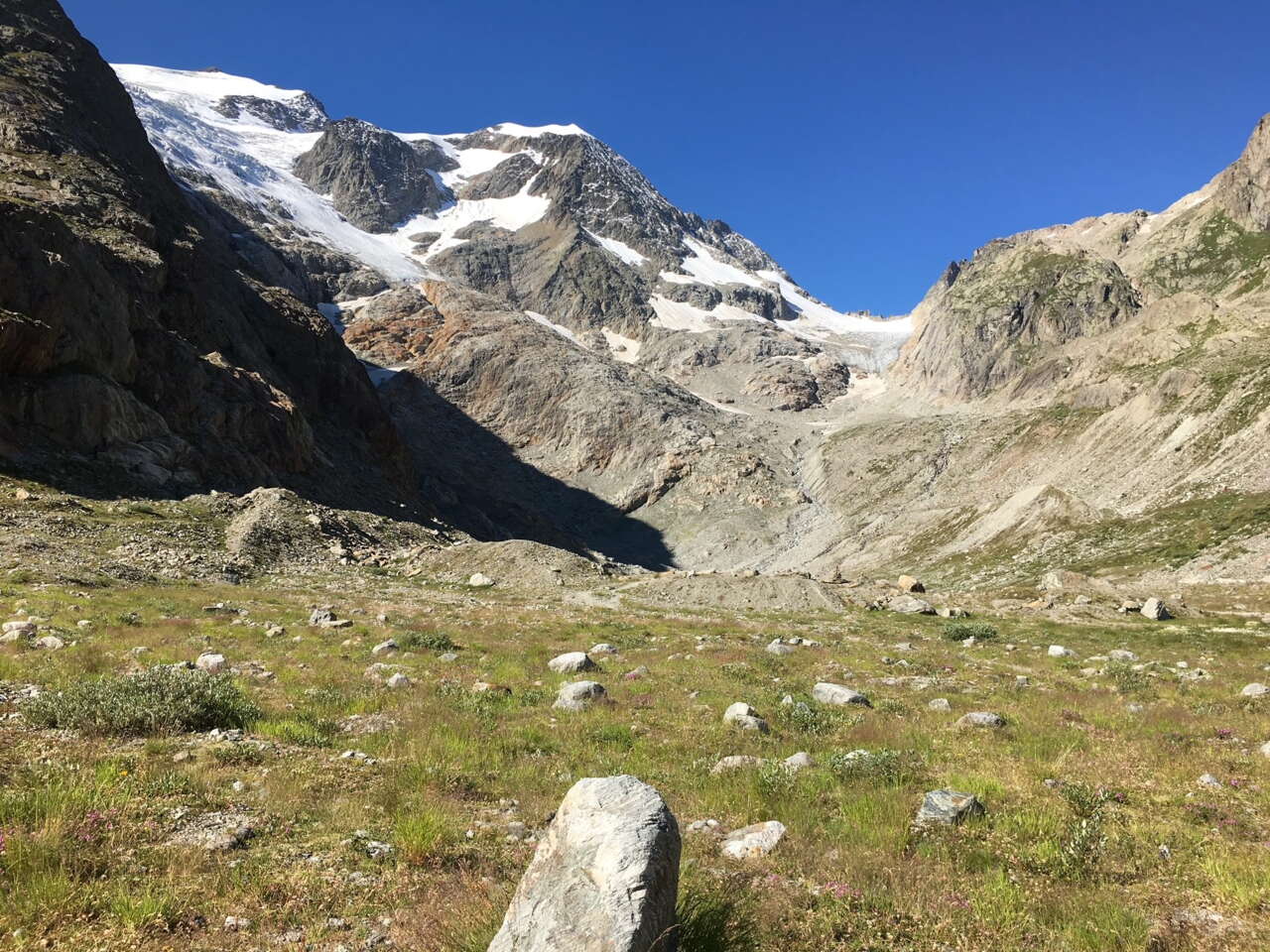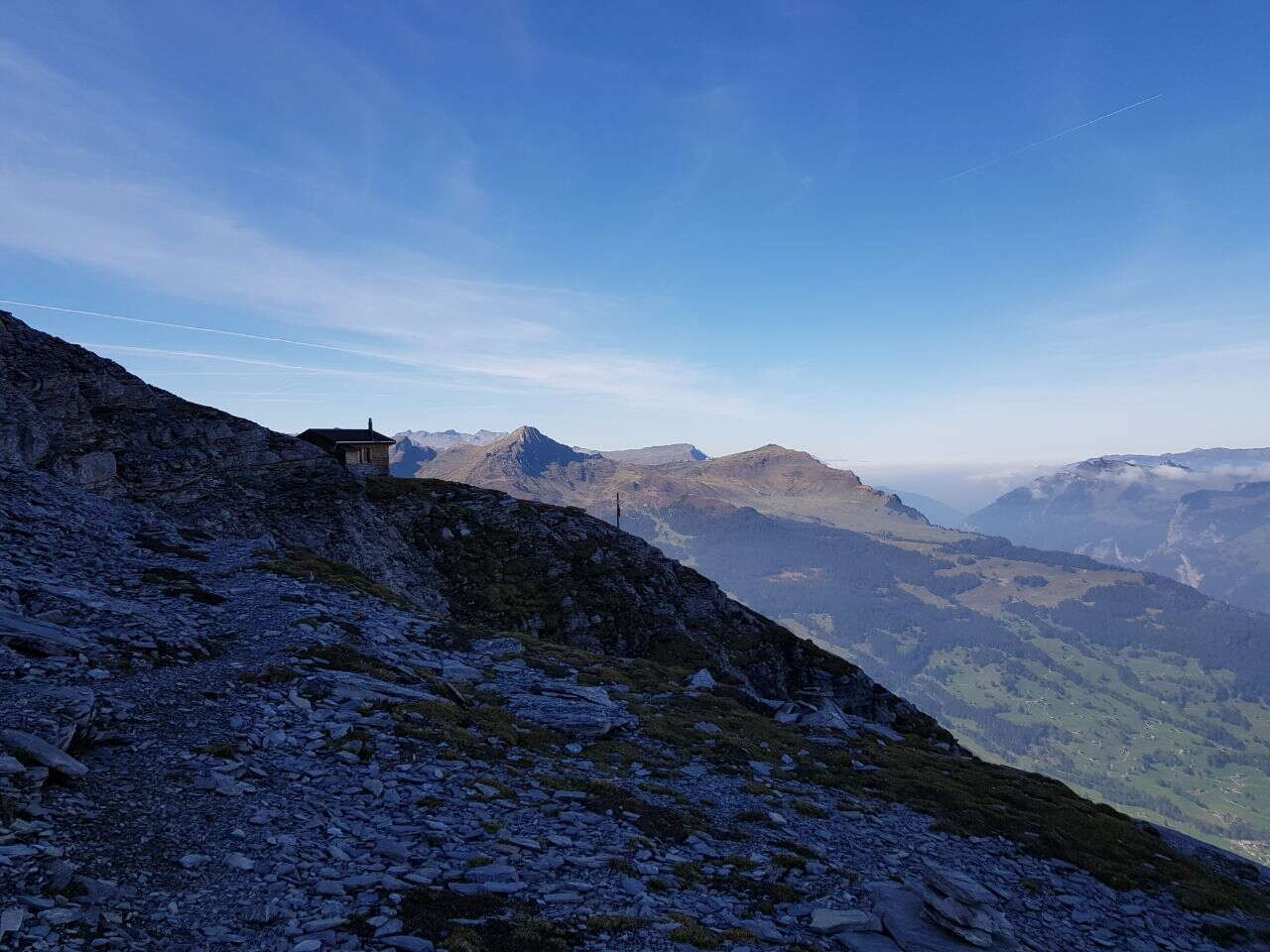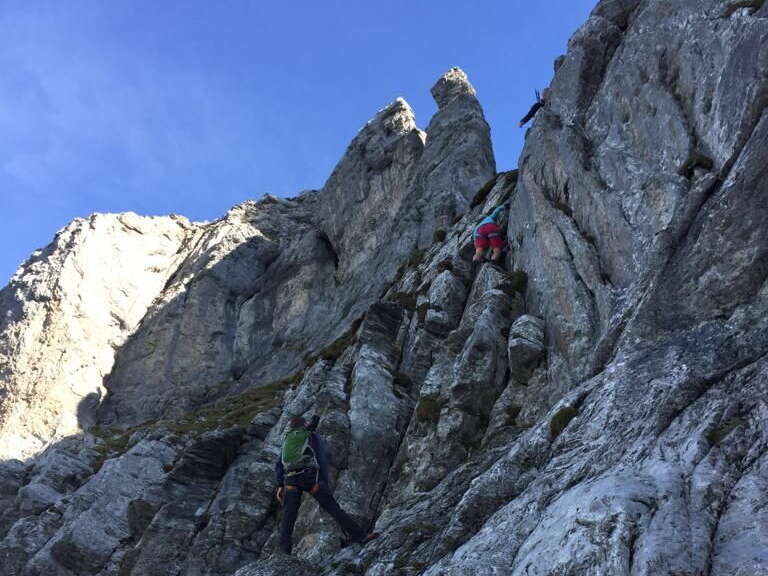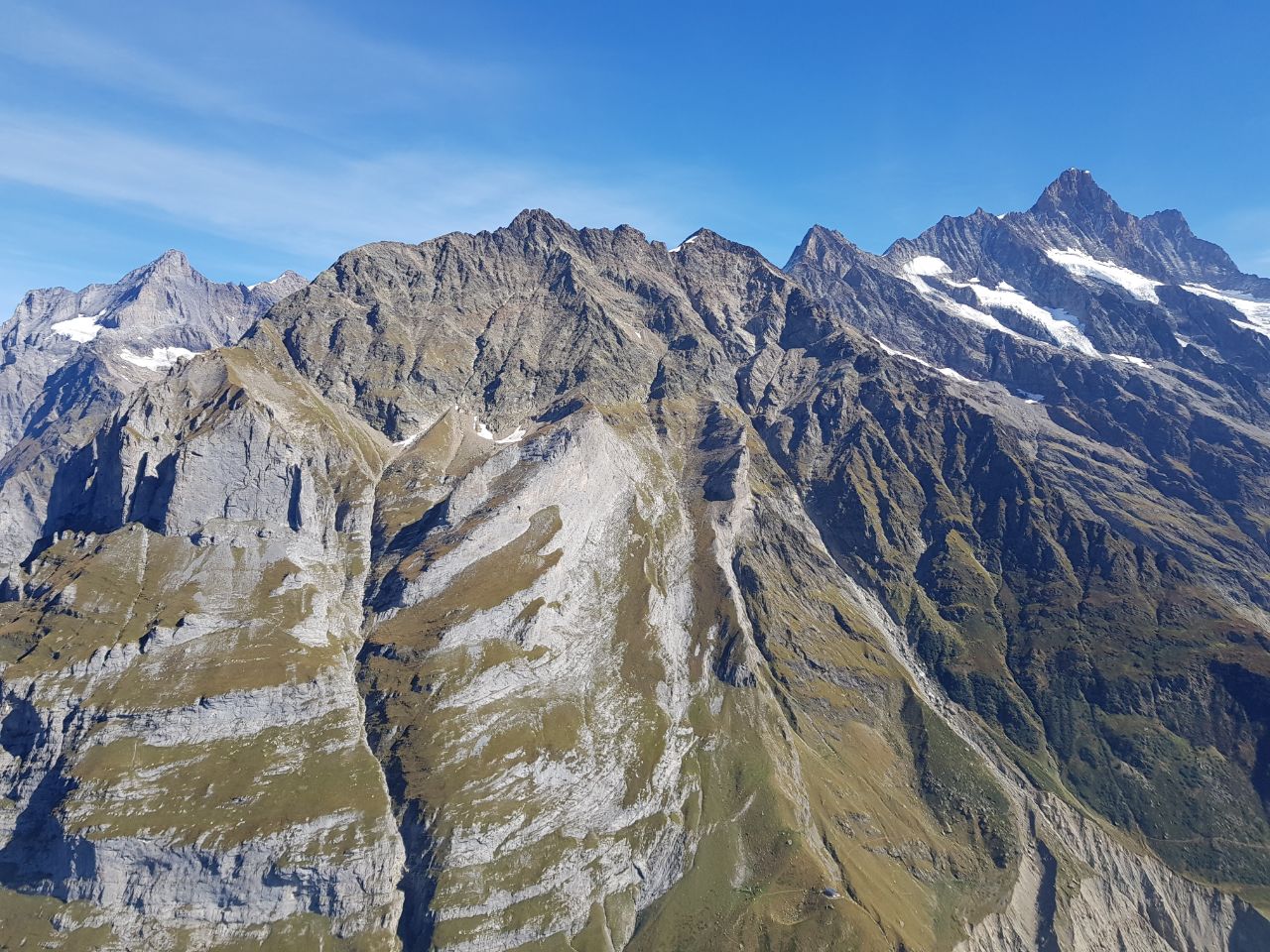A via ferrata is an artificial climbing route in the mountains that is equipped with wire ropes, ladders, clamps and stepping pins. That's what it says on Wikipedia. In the Jungfrau Region, we have several such via ferratas - each one more spectacular than the last.
Important: Yes, on a via ferrata you can climb vertical rock faces - well secured with a via ferrata set - even without much climbing experience. Nevertheless, there are a few points to bear in mind: You should be physically fit, have a head for heights and be sure-footed. The right equipment, the correct safety technique and good planning in advance are also essential. As always in the mountains, it is also important to consider the weather.
Mürren: Suspension bridge over the abyss
You won't gain any height on this via ferrata. On the contrary. Here you don't climb up, but down. From Mürren to Gimmelwald - spectacular views of the Bernese four-thousand-metre peaks included. The Via Ferrata stretches over around 2.2 kilometres. The route leads over bridges, ladders and along steep rock faces. The highlight of the via ferrata is a suspension bridge: 80 metres above the abyss, above the Lauterbrunnen Valley.
The via ferrata starts in Mürren, less than ten minutes' walk from the Schilthorn cableway station. Once you arrive in Gimmelwald, you can take the same railway back to the starting point - or to the Lauterbrunnen Valley, to Stechelberg.
Tälli: an almost vertical ladder
The Tälli via ferrata stretches over 600 metres in altitude and offers a mixture of technical passages, steep sections and breathtaking views. The climb is well secured, with steel cables, ladders and steps to make the ascent easier. Nevertheless, you should not underestimate the difficulty, as some passages are demanding and challenging. A highlight of the via ferrata is the long ladder, which runs almost vertically. This section is both physically and mentally demanding and requires a certain amount of climbing experience and stamina. Further up, there are also exposed sections that offer a dizzying view into the depths.
The starting point for the via ferrata is the Berghaus Tälli, which you can easily reach with the Tälli gondola. The bottom station of the cable car is located on the Susten Pass road, which makes access to the via ferrata extremely easy. From the mountain station, it is only a few steps to the start of the via ferrata.
Rotstock: close to the north face of the Eiger
The 260-metre-high via ferrata on the Rotstock (2663 metres above sea level) is a route for via ferrata climbers and experienced mountain hikers with a head for heights (with the necessary equipment). It leads along the Rotstock, a rocky outcrop on the Eiger, to the summit of the Rotstock - and scores with spectacular views of the surrounding glaciers and mountains. The via ferrata is equipped with steel cables, steps and ladders to make the ascent easier. There are several places along the way where you can enjoy the view and take photos. The key point is the vertical step just after the start.
And this is how you get to the start of the via ferrata: on the journey on the Eiger Express from Grindelwald Terminal to the Eiger Glacier at 1,800 metres above sea level, you come pretty close to the north face of the Eiger for the first time. You now follow the Eiger Trail up to the grassy Wart shoulder - and then follow the tracks up to the start behind a rock head, just to the left of the Rotstock Gorge, at 2400 metres above sea level.
Schwarzhorn: Dizzying view into the depths
The Schwarzhorn via ferrata is technically demanding and requires good physical condition and climbing experience. The route leads over steel cables, ladders and steps that run along the steep rock faces. In the middle of the ascent, a bench invites you to take a cosy break. Some sections are exposed and offer a dizzying view into the depths. Concentration and safe handling of the climbing equipment are required here.
The starting point for the via ferrata is the First mountain station, which you can easily reach by cable car from Grindelwald. A road leads from the mountain station in the direction of Grosse Scheidegg. After about 15 minutes, a hiking trail branches off and leads to the foot of the Schwarzhorn. Follow the blue-marked path that leads to the ‘Grosse Chrinne’ and finally to the start of the via ferrata. Once you reach the top of the Schwarzhorn, at 2928 metres above sea level, the overwhelming view - of the surrounding peaks of the Eiger, Mönch and Jungfrau or the Grindelwald valley - makes up for all the effort of the ascent.
Tierbergli: Spectacular view
The Tierbergli via ferrata boasts a spectacular panorama of the surrounding mountains, including the Sustenspitz and the Gwächtenhorn. Despite the impressive backdrop, you should always stay focussed as the via ferrata is challenging and exposed in some places. It requires a good physical condition, a head for heights and experience in using via ferrata equipment. The via ferrata leads over steep rock faces and airy passages, some of which are secured with steel cables, ladders and stepping sticks. However, the approximately 1150 metres of wire rope generally ensure a safe ascent. The sections without a wire rope are marked with cairns.
How to get to the start of the via ferrata: The route begins near the Tierbergli hut, which is known for its hospitality and breathtaking views of the surrounding peaks. You can reach it on foot from the Hotel Stein glacier in three hours and from the Umpol car park in two hours. Both locations are on the Susten Pass road.
Eiger-Ostegg: not for beginners
The demanding and technically challenging via ferrata leads along the eastern flank of the notorious Eiger. It offers a variety of technical passages, steep sections and spectacular views. Due to its difficulty, it is not suitable for beginners. Climbers should be experienced in using via ferrata equipment and have a head for heights.
You can access the via ferrata from Alpiglen station (accessible with the Wengernalp Railway from Grindelwald) via the Eiger Trail to the P. 1758 junction of the hiking trail to Bonera and Grindelwald. Follow this trail down to a stream bridge and then more or less horizontally to the junction of the hiking trail to the Eiger-Osthütte.
Guided tours
You can also complete all via ferratas as part of a guided tour. You can find out more here.








